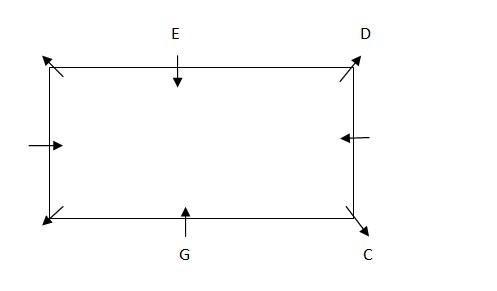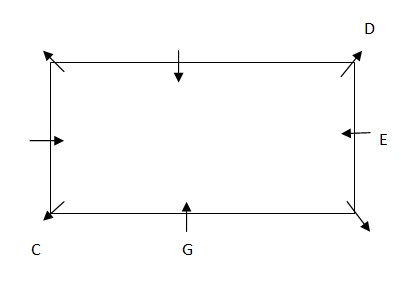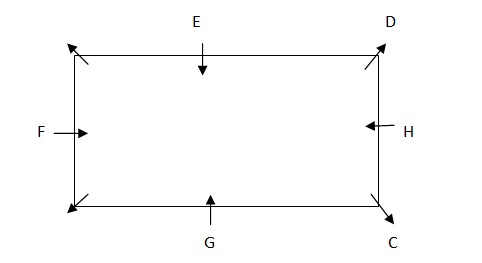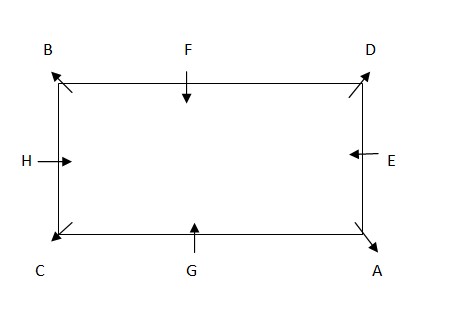Question
Which of the following pairs represents the persons
seated in the middle of the sides and face each other? Study the following information carefully to answer these questions carefully. A, B, C, D, E, F, G and H are sitting around a square table in such a way that four of them sit at four corner of the square while four sit in the middle of each of the four sides. The ones who sit at the four corners face outside while those who sit in the middle of the sides face the centre of the table. D sits third to the right of G. G faces the centre. E sits third to the left of C. C does not sit in the middle of the sides. Only one person sits between E and F. F is not an immediate neighbour of C. H faces the centre. A, is not an immediate neighbour of F.Solution
We have provided with the information, D sits third to the right of G. G faces the centre . E sits third to the left of C. C does not sit in the middle of the sides. C can sit at two places either on the immediate left of G or at the immediate right of G. Case. 1 – When C sits on the immediate right of G  Case.2 – When C sits on the immediate left of G
Case.2 – When C sits on the immediate left of G  Only one person sits between E and F. F is not an immediate neighbour of C. Case 1- F will sit on the right of E. H faces the centre. A, is not an immediate neighbour of F.
Only one person sits between E and F. F is not an immediate neighbour of C. Case 1- F will sit on the right of E. H faces the centre. A, is not an immediate neighbour of F.  In this case A will become an immediate neighbour of F which will make this case wrong. We will continue with case 2. Case 2- F will sit on the right of E. Only place left for B is on immediate right of F. Thus the final arrangement is;
In this case A will become an immediate neighbour of F which will make this case wrong. We will continue with case 2. Case 2- F will sit on the right of E. Only place left for B is on immediate right of F. Thus the final arrangement is; 
A boatman rows 216 km upstream in 6 hours and 432 km downstream in 6 hours. How long will it take to row 324 km in still water?
In still water, a boat can cover 30 km in 90 minutes. Speed of the stream is 20% of the speed of the boat in downstream. Find the time taken by the boat...
A boat can cover 176 km in downstream in 11 hours and 150 km in upstream in 15 hours. Find the speed of boat in still water
A boat takes 4 hours to travel 48 km downstream and 6 hours to travel the same distance upstream. What is the speed of the boat in still water?
A boat goes 8 km an hour in still water, but takes twice as much time in going the same distance against the current. The speed of the current (in km/ho...
- Ronit takes a total of 24 hours to travel 128 km downstream and then the same 128 km distance upstream. Additionally, he takes 30 hours to cover 480 km dow...
A boat can cover 140 km in downstream in 7 hours and 130 km in upstream in 13 hours. Find the speed of boat in still water.
Speed of a boat in still water is 4 times more than the speed of stream. If boat covers 126 km in downstream in 7 hours, then find the time taken by the...
The speed of a boat in still water is 30 km/hr. If the boat covers 240 km in upstream in 12 hours, then find the time taken by the boat to travel 140 km...
A boat can travel 15 km upstream and 21 km downstream in 3 hours. Find the speed of the boat in still water if the speed of the stream is 1.5 km/h.


